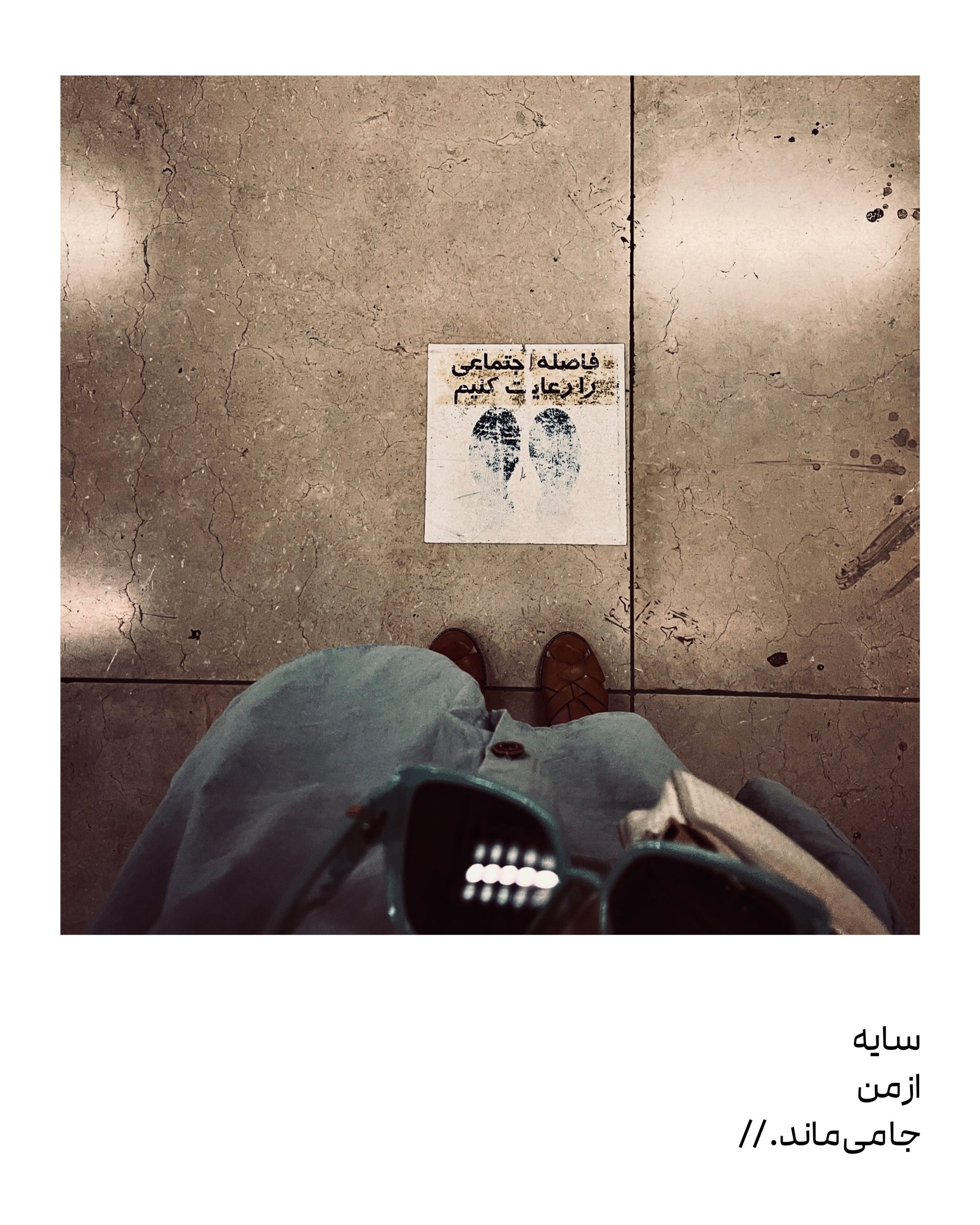
Self Portraits by Neda Aghasi | سلف پرتره های ندا آقاسی
“A moment of the world’s life passes, picture it…”
Today, all the people in a society are creating their own image, this image is not derived from aesthetic systems by institutions of power, but from the praise of the everyday and avoiding any metaphor and symbolism. Neda Aghasi’s self-portraits are the result of her self-recognition after finding a new identity called “motherhood” and a struggle between her yesterday’s self and her today’s self. Self-portraits without the presence of a face and a rebellion against absence, where the simplest everyday events achieve the role of the artist’s “self-reflection” and with the absence of a face, every object becomes a mask of an invisible face.
Curator: Ali Akbar Sayah
«لحظه ای از زندگی جهان می گذرد، تصویر اش کن...»
پل سزان
امروز تمام آدمهای یک جامعه در حال ساخت تصویر خود هستند، این تصویر نه برخواسته از نظام های زیبایی شناسانه از سوی نهاد های قدرت، بلکه در ستایش امر روزمره و دوری جستن از هرگونه استعاره و نماد پردازی است. سلف پرتره های ندا آقاسی، برآمده از بازشناخت خودش پس از یافتن هویت جدیدی به نام «مادرانگی» و تقلایی میان خودِ دیروز و خودِ امروز است. سلف پرتره هایی بدون حضور چهره و قیام علیه غیاب که ساده ترین رویداد های روزمره، به نقش «خود بازتابی» هنرمند دست می یابد و با فقدان چهره، هر شئ بدل به نقابِ چهره ی ناپیدا می شود.
کیوریتور: علی اکبرسیاح
Shadow and the concept of self-reflection
The shadow, in Jungian psychology, represents the repressed or disowned aspects of one's personality, often containing negative traits or impulses that an individual prefers not to acknowledge. Self-reflection, particularly through shadow work, is crucial for integrating these hidden parts of oneself, leading to greater self-awareness and personal growth. By exploring and understanding the shadow, individuals can move towards a more complete and authentic sense of self, accepting both the light and dark within.Carl Jung's concept of the shadow refers to the unconscious aspects of the personality that are typically hidden from conscious awareness.\By acknowledging and integrating the shadow, individuals can achieve greater self-awareness, authenticity, and personal growth. This process can lead to increased emotional regulation, improved relationships, and a more complete understanding of oneself. The goal of shadow work is not to eliminate the shadow, but to integrate it, recognizing that it is a part of oneself. This can lead to self-acceptance, compassion, and a more balanced and integrated personality.
Jung’s goal was to understand the human mind and expose what determines people’s identities, makes us who we are. Enter the Shadow. This is the part of our unconscious mind that Jung believed to hold all the things about ourselves that we repress, whether because they are evil, socially unacceptable, harmful to others, or detrimental to our own health. Our Shadows embody our inner darkness, the things about ourselves we hide, the damage we experience in our lives but never fully heal, desires we cannot satisfy.While this inevitably is a long, confusing, tiring, repetitive process, the result of its success is harmony with things one has denied in themselves, as well as peace with who they are, healing damage they have experienced, and healthy expression of their repressed desires. Accepting one’s Shadow is crucial to complete acceptance of ourselves and of one another. Our darkness makes us who we are, just as much as our goodness does.













